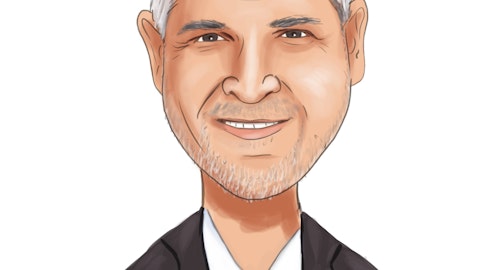Naz Rahman: Thanks. That was helpful. And my second and last question is on the IDN network, could you provide some color or commentary on, I guess, like how many offices or facilities this represents beyond the number of patients? And like how long would it take you to do in-services or how many in-services do you have to do in this network to gain traction?
John Tucker: Yes, so there — so that the network we announced today, it’s kind of a hybrid IDN where there’s hospitals, some of them with pretty big heart failure clinics and they’ve also got a network of kind of individual physicians that a lot of them practice inside the facility, but some of them are private practice, seeing patients there. Steve, I don’t know if you want to add anything to that.
Steve Parsons: The beauty of an IDN is, they can control the training. They can schedule the employees to be available and they’ll do a lot of that in-servicing themselves. We won’t necessarily have to do it one location at a time. In fact, they talk about they like to control it, they like to do it their way, they like to follow up, and so that’s not a burden for us.
Naz Rahman: Got it. That was helpful. Thanks for taking my questions.
John Tucker: Thanks.
Operator: [Operator Instructions] The next question comes from Chase Knickerbocker with Craig-Hallum Capital Group. Please go ahead.
Chase Knickerbocker: Good afternoon, guys. Thanks for taking the questions. Maybe just first for me, let’s kind of look within that, RX written, RX filled, maybe with the physicians who are having the most success, where they’re writing the most, where you’re starting to see kind of a percentage inversion of those written scripts being a little bit higher. Do we see any sort of — kind of similarities between some of those places where you’ve contracted, where there’s a higher percentage of those patients who are on that fixed-tier co-pay and then maybe talk about how different [indiscernible] kind of protocols are maybe driving higher or lower converting there as well. Thanks.
Steve Parsons: So if I’m hearing correctly, the prescribers or the offices that have a higher percent filled versus others that are lower, above the average of 55%. The more they use the product, the more they get comfortable with the process of doing it, providing the proper prior authorization information, the smoother it goes. The more experience they have, they also now start to look for patients who have better access to the product. We’re seeing Docs who are selecting more Medicaid and more commercial and Medicare Advantage patients. And so for them — now that they believe in the product, they’ve seen the results, they can select and they’re offering it to folks where it’s a little easier who may not necessarily have a high copay. So we’re seeing some of that.
John Tucker: I think — Chase, I think what we saw and what we’re continuing to see is that, offices are getting more used to filling out the start form and whatever information they need plus our specialty pharmacy is doing a better job at finding patients. Some of these patients when they get a phone call, they don’t recognize a number, they don’t pick up. So we’re texting, we’re sending them letters. So I think all of that, and I think we’ve talked about that, that this is part of the process of raising the fill rates. The other part of the process, obviously, is getting copay down on adjudication time faster, which is what we’re working on the market access side of it. But I do think what drove it, the increase in Q3 for Doctors offices and especially pharmacy really finding the best ways to engage with these patients and we’ve done market research about that, about how best to engage with these patients.
So I think that’s going to continue into this quarter and into next year. I think when we put on top of that managed care, payer wins, which can increase or decrease adjudication time and lower co-pays, it’ll all drive that fill rate up.
Chase Knickerbocker: Maybe digging in there just a little bit. What are you seeing from an adjudication kind of timeframe on the ones that do eventually get filled? Is that timeframe tightening, just any sort of additional color there would be helpful.




